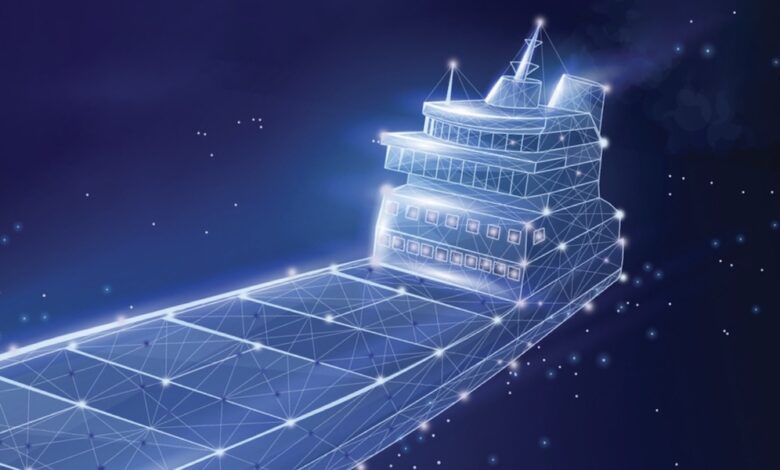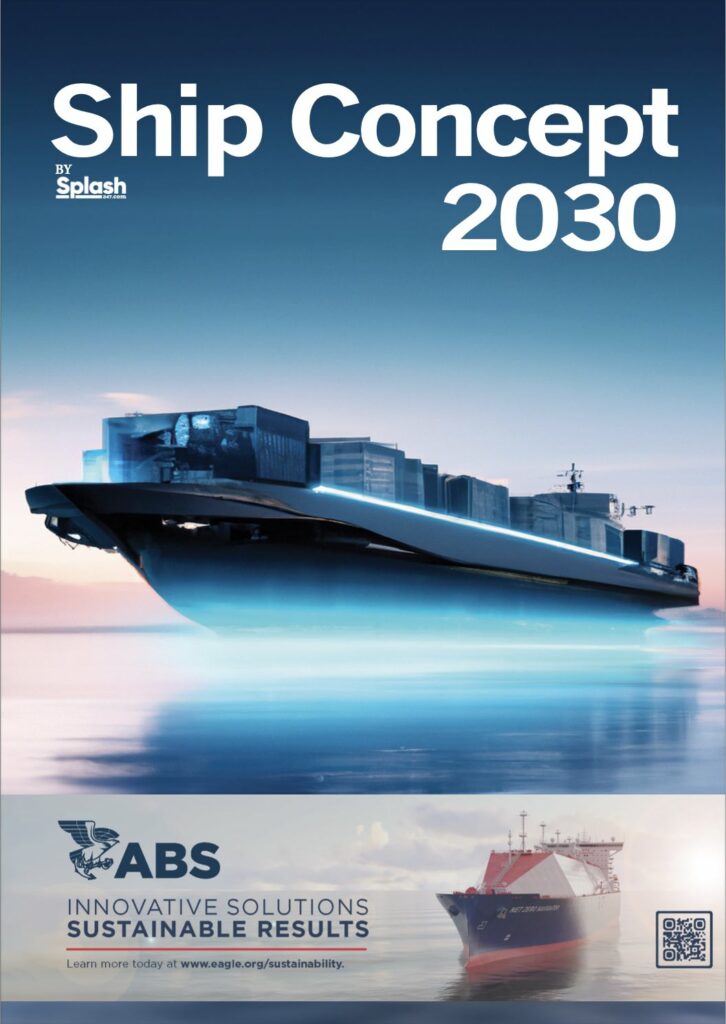What life will be like onboard at the start of the next decade

Nick Chubb, founder of UK maritime tech consultancy Thetius, gets creative, giving readers a guided tour of a methanol-powered ship traversing the world’s oceans in late 2030.
The MT Zero is a dual-fuel methanol carrier. It can carry 200,000 cu mof methanol and trades between the Gulf of Mexico and the European Union. The words ‘Powered by Methanol’ are plastered across the side of the vessel and the owners talk proudly of the ship’s green credentials. Unfortunately, in reality, it hasn’t run off methanol since sea trials.
The global methanol shortage has been a good thing for the fleet. Any ship that can carry methanol is constantly in demand, and the charter rates are sky-high. But it’s such a precious commodity that it can never be used as a ship’s fuel.
Since methanol became the primary feedstock for sustainable jet fuel the price has skyrocketed. While it’s highly profitable to carry methanol, it’s incredibly expensive to burn it. At the same time, as the world has moved further away from fossil fuels, heavy fuel oil has become the commodity that no one wants.
Even with the various carbon taxes in place around the world, it has so few industrial uses that shipping companies are practically being paid to burn it.
The world’s seafarers will continue to be certified to a standard that was useful decades ago
This issue has become so pervasive that even the International Maritime Organization ()IMO is involved. At MEPC 94 earlier this year, the committee had to admit that the industry has missed every target set in every greenhouse gas strategy to date. We all expected the EU ETS to kick the IMO into action, but the international market-based measures that were promised in previous iterations of the GHG strategy still haven’t materialised.
It has become such a big issue that the EU is responding by exploring a heavy fuel oil ban from 2035. Until that happens, every newbuild ship rolls out of the yard with a ‘net-zero ready’ certification and then happily continues to burn cheap and dirty heavy fuel oil.
Apart from the ‘Powered by Methanol’ credentials, the only other major advance in ship design is the explosion in wind power. Most newbuild deepsea ships today have some kind of sail. With rotors, kites and wings filling the skies, the modern fleet is far more interesting to look at than it used to be.
On the bridge, the latest autonomy technology is in use. The ship is not just capable of running with an unmanned machinery space but an unmanned bridge. It doesn’t make any difference to the number of crew carried, but it allows those who are still onboard to get better rest.
The IMO’s 2026 Autonomy Framework requires operators to get an exemption from both flag and class for unmanned bridge operations. The exemption takes months to be approved and only applies to a single voyage corridor. Each exemption allows the crew to pass navigation and watch keeping duties to an approved shore control center during the open sea passage. Instead of watchkeeping, the crew onboard can rest or take on maintenance tasks, but they need to be ready to step in at any time in case of traffic or if the ship needs to deviate from its approved corridor.
All of this is made possible by the mandatory rollout of the Voyage Data Exchange System (VDES). VDES has replaced AIS for all newbuild vessels. Anyone with a VDES receiver can see the ship’s intended route information, plus nearby ships receive notification if the ship intends to deviate for collision avoidance.
VDES combined with the rollout of LEO networks have made communication between ships and with shore teams much easier. The team onboard can dial into daily stand ups with the shore-based team to discuss live issues and there is a constant channel of communication between the bridge and the shore control centre.
Just because the crew onboard aren’t watchkeeling doesn’t mean they aren’t working hard. MT Zero is a modular ship. This design philosophy was popularised in the late ‘20s. It makes it possible to swap out the fuel, engine, propulsion, cargo pumps, and navigation systems with new equipment in a standard drydock period. The aim of this is to futureproof the vessel against emerging technologies or alternative fuels becoming economically viable or mandatory.
Modular ships are more expensive to build, but the expectation is that the hull and superstructure will last for a century and the vessel will go through four to five modular upgrades in its lifetime. This reduces the lifetime carbon footprint of the ship but it means the crew have to be much more proactive on maintenance.
The good news is there is plenty of technology available to help them. Though high bandwidth connectivity between ship and shore has been pervasive for some time, wireless connectivity between compartments onboard the ship has only recently become widely available. Not having to run cables for every device means it’s now possible to connect thousands of sensors into one system for very little investment.
Data gathered by these sensors feeds an AI-driven maintenance system that prioritises jobs for the crew. For visual inspections and simple repair jobs they have access to a range of drones that are capable of either flying into compartments or crawling across the hull. For more complex or specialist jobs the onboard 3D printer can create a range of tools, patches, and parts.
Despite the advanced technology onboard, life for a seafarer hasn’t changed much. The knowledge and training requirements to become a master mariner make no provision for autonomy, VDES, or advanced cyber security.
Instead, they still have to learn signal flags and morse code. The UKHO withdrew paper charts a few years ago, but many maritime colleges are still required to teach paper navigation. The basic requirements to sail on a dual fuel ship were bolted onto the last STCW update, but most individuals have very little practical experience of safely bunkering new fuels.
Maybe things will improve in 2040 when we next have an update to the convention? For now though, new technology will march forward and the world’s seafarers will continue to be certified to a standard that was useful decades ago. I guess some things don’t change.
This article is one of many in the recently published Ship Concept 2030 magazine, a publication designed to give readers a realistic idea of what newbuilds will look like in seven years’ time. Splash readers can read the full magazine for free by clicking here.

Ship Concept 2030 is sponsored by ABS, click here to read ABS’s 2023 Outlook.

There’s more brutal truth in this “vision of the future than there is in most accounts of present day developments.
Very good indeed.
Interesting article.
My takeaway is in the future the crew of any new ship will still be treated as an “after thought” just as they are today. While there may be fewer of them onboard, they will never truly disappear from most ships. The real challenge will be to find qualified people to sit in a control room half a world away to monitor the movement of several ships all at once from a “remote” facility. Just as it is out at sea, watch standing for navigational purposes (or even the engine room) will be countless days of extreme boredom, interrupted by moments of incredible terror due to collision avoidance or some other unforeseen mishap.
I wonder how many ship operators, owners, or executives have considered these challenges that involve their HR offices and not just the IT nerds down the hall???
I agree with Ed. “Drone watchstander” isn’t going to be a job that attracts many. I am not at all sure about unmanned bridges. I was once an enthusiast for “OMBO” – after a while, the inevitable happened, and I think it was my fault more than the fault of the watch keeper, who had been on cargo work all day.
I prefer the idea, which I think Lauritzen developed, of making the wheelhouse a social space.